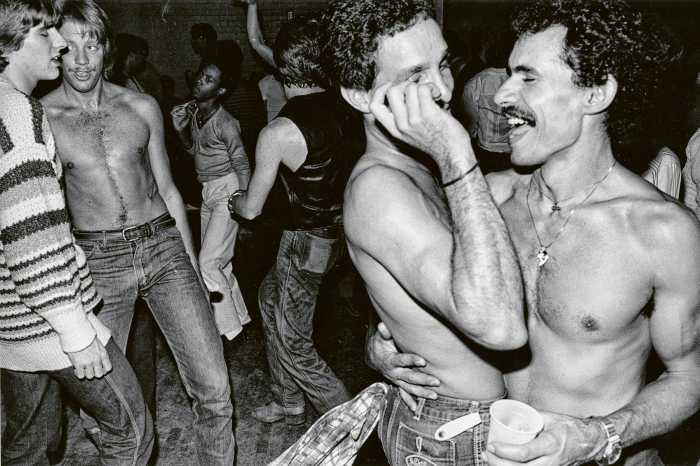Two signal events that would have important and dark consequences for same-sexers occurred within a couple of years of each other early in what is known as the Age of Reform in Queen Victoria’s England.
One was the establishment of London’s Metropolitan Police Force in 1829. The other was the “infamous crime” section of the 1827 revision in the sodomy law. Sodomy had long been a capital crime — and would remain so until 1861 — but the new statute codified attempted sodomy in such a broad way that not only were a new spectrum of acts criminalized, but so too was the language that could suggest such acts.
The new law’s “Section X” chillingly declared that “for defining what shall be an infamous Crime, within the meaning of this Act, be it enacted, That the abominable Crime of Buggery, committed either with Mankind or with Beast, and every Assault with Intent to commit the said abominable Crime, and every attempt or Endeavor to commit the said abominable crime, and every Solicitation, Persuasion, Promise, or Threat offered or made to any Person, whereby to move or induce such Person, or threat offered or made to any Person, whereby to move or induce such Person to commit or Permit the said abominable Crime, shall be deemed to be an infamous Crime within the Meaning of the Act.”
Charles Upchurch unearths public awareness, legal crackdown on 19th century gay sex
The result of this immensely broadened statute was a huge increase in the number of arrests for attempted sodomy, with 864 trials on that charge between 1811 and 1861, compared to only 116 cases of sodomy. Thus, one Henry Webb was arrested and thrown into a dank Bow Street holding cell after Thomas Addy pulled him toward an officer in Covent Garden and said, “I give this gentleman in charge for an indecent assault.” Not a shred of further evidence was required to hold a man on such a charge.
A high percentage of the “indecent assault” cases brought under sodomy statutes involved men of modest means — soldiers, laborers, apprentices, and tradesmen — swearing out complaints against upper-and-middle class men. At the same time, in 1823, Parliament broadened the laws governing extortion in such a way that men of property had their chances of successfully defending themselves against an attempted sodomy charge improved by counterattacking with an allegation of attempted robbery against their accuser.
The ruling class that wrote the new extortion statute had uppermost in its mind the unfortunate Lord Castelragh, British foreign secretary from 1812 to 1822. In August the year before the new extortion statute was enacted, Castelragh had confessed to King George IV that he was being blackmailed over the accusation that he’d committed sexual acts with another man. Two weeks later, the foreign secretary went home to his lavish country estate and slit his throat.
In “Before Wilde: Sex Between Men in Britain’s Age of Reform,” Charles Upchurch writes that the “profound” influence of the new extortion statute on courtroom cases meant that “discussion of the validity of the initial claim of attempted sodomy was always complicated and often compromised in the courtroom when a man countered it with an accusation of extortion, even if no formal charge was made to this effect. The younger and poorer men to whom those with greater wealth often turned for sex were particularly susceptible to the offer of a week’s or even a year’s wages in return for silence, and the burden of proof was often placed on them in the courtroom to demonstrate that they had not asked for or accepted money. Disproving such allegations was critical for a working-class man, because evidence that he had accepted payment left him open to prosecution, even if he had been the object of an unwanted sexual advance.” The men who ruled England were obsessed with how public disclosure of an accusation of sex between men would affect a man’s reputation, and so the penalties for making such an accusation were greater than for “unnatural assault” itself.
The influence of class differences on how male same-sexers were treated and how they thought of themselves is a constant presence throughout Upchurch’s book, as he recounts dozens of court cases involving homosexual conduct and how those cases were covered in the burgeoning newspapers of the day. For example, “Lower-class men were thought to lack the self-discipline and personal restraint of their social betters and therefore more likely to instigate such [sexual] acts, either for the gratification of base desires or for financial gain,” one publication claimed.
Previous historical accounts have made the unwarranted assumption that there was little public discussion or public awareness of same-sex activities in Victorian England until late in the century, when a series of notorious cases involving queers culminated in the prosecution and conviction of Oscar Wilde.
But Upchurch, after a decade of meticulous research, demonstrates that this assumption is palpably false. Earlier examinations of the press in early-and-mid Victorian England relied on indexes and databases built on key words that missed many published reports on same-sex conduct and legal action. But by minutely examining the files of three newspapers with different class audiences between 1827 and 1870, and cross-checking them with court records, official documents, and correspondence, Upchurch has shown that not only was there broad public awareness in these years of sex between men, but that male homosexual conduct was a matter of considerable public discussion.
The Morning Post was the favorite newspaper of the British upper classes, filled with court gossip and accounts of the frivolities of the wealthy and powerful. Its coverage of court cases involving attempted sodomy was skewed to those in which men of social standing and property successfully defended themselves against “indecent assault” charges. The Weekly Dispatch, with the largest circulation among the working classes, usually gave priority in its coverage to those cases involving men of modest means in some way, usually as accusers of the wealthy. And the Times of London, the favorite newspaper of the upwardly mobile middle class, was replete with the Methodist morality of a rapidly expanding bourgeoisie — in those years much influenced by the mushrooming of evangelical religion with its strict codes of sexual conduct.
So extensive was newspaper coverage of legal proceedings involving homosexuality that, as Upchurch demonstrates, judges repeatedly held that those brought into court by charges and countercharges involving “indecent assault” had to be well aware of the nature and extent both of the broad legal prohibitions against sexual advances between men and of the extortion statutes that also covered them. The parties to such legal action were also assumed to be aware of notorious places around London in which men seeking sex with other men were known to congregate and even engage in sexual conduct, in the view of those on the bench. A quarter of the press reports on same-sex conduct in the years 1842 to 1870 focused on extortion charges involving attempted sodomy. Of the remaining articles, five involved clergymen, seven focused on cross-dressers, and four involved the questioning of police methods in same-sex cases.
One of the peak years in which there was a spike in newspaper coverage of homosexuality was 1842, and much of it was devoted to the Churchill and Springer case. Newspaper accounts first reported that a “respectable looking” man named William Springer testified that, while walking in Hyde Park at about 9:15 p.m., “on passing a clump of trees he saw two men in indecent behavior.” He said he sprang on the two men, one of whom got away. “The man he caught, named John Ellis Churchill, allegedly begged to be let go and indicated that he was a gentleman and would give Stringer any amount of money”
Churchill, the nephew of a member of Parliament, asserted that “while walking through the park at night, a young man came up to him and asked him the way to Oxford Street. Churchill said he would show him, as he was going the same way. Stringer came upon them and accused them ‘of having committed a most opprobrious crime.’ At this point, Churchill said, he began to suspect that the young man asking for directions was in league with Springer, as he was giving Churchill advice to go quietly with his accuser and not resist.” The young man had run away before Stringer dragged Churchill to a group of police.
If the first day’s press coverage indicated that the judge appeared to believe Stringer, the second day the newspaper reports began to turn in Churchill’s favor, when it was revealed that friends of his had found out that Stringer had lied about working at the firm of Sheppard and Smith. Following this discovery, Churchill had brought a counter-charge against Stringer for assault.
Newspapers devoted even more space to the case when Churchill’s friends located and brought into court William Newstead, “a good looking, well-dressed young man,” who had worked with Stringer that first night in Hyde Park. Churchill’s attorney told the court he “could prove that the two men were connected with a number of persons concerned in similar conspiracies.” Another friend of Newstead and Stringer cooperated with the police and declared “there were a good many more in the gang.” It was also revealed that Stringer used multiple aliases and had recently returned illegally from a criminal sentence that had sent him to one of England’s colonies. Letters to the editor began to appear in the newspapers about the case, with one to the Times signed “A Solicitor” asking, “Now, Sir, we may ask, if this be the law of England, what security is there for any man’s reputation!”
Press coverage mushroomed still further when another friend of Stringer and Newstead, William Fitzgerald, was brought into court on an extortion charge for having lured a working-class hairdresser named Watson to his lodgings and then threatened to expose him for attempted sodomy unless he received payment. Eventually all three men were convicted and sentenced together, with the judge declaring that “a more detestable or foul conspiracy he had never heard of.”
Upchurch, an assistant professor of history at Florida State University, writes like an academic, which is to say that his prose, while readable, is often stilted and unimaginative. And he has an annoying tic, quite noticeable in a number of instances, of referring casually to historical facts, laws, or notorious court cases without explaining them until much later in his book, if at all.
But Upchurch displays an impressive command of both original sources and previous historical accounts of homosexuality in this period, and his groundbreaking new research is impressive and invaluable. The book comes with a well-merited jacket blurb from the admirable, pioneering British gay historian Jeffrey Weeks, a key figure for decades in the British intellectual “gay left,” saying that it “fills an aching gap in the history of male homosexuality in Britain in the middle years of the 19th century.”
Moreover, Upchurch distinguishes himself by placing the events he recounts in their social, cultural, and political context, and by his well-informed reflections on the implications of class and race for the matters under discussion. The result is a fascinating and informative picture of sex between men in mid-Victorian England that greatly increases our knowledge and insight.
It is unfortunate that gay studies programs in US universities, so preoccupied with the arcana of “queer theory,” are not sufficiently encouraging research of this kind on our own history, so much of which still remains unexplored, and not producing more books like this on homosexuality in America. With “Before Wilde,” Upchurch has set a standard for depth and originality of research and creative social analysis that our own gay historians would do well to meet.
Complete Information:
BEFORE WILDE: SEX BETWEEN MEN IN BRITAIN’S AGE OF REFORM
By Charles Upchurch
University of California Press
$45; 276 pages
































